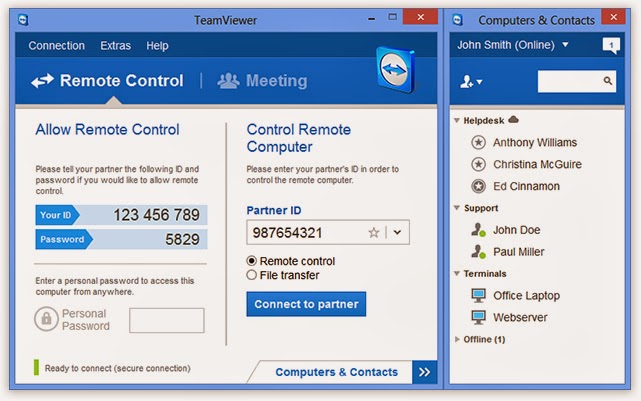


In the Security level list, select Unrestricted.įigure 7.In the Path field, enter the certificate, file name, file extension, or directory that you want to allow.Select Action and then select New Path Rule…. On the Action menu, select New Path Rule….įigure 6.Expand Software Restriction Policies and then select Additional Rules. In the Local Security Policy dialog box, expand Software Restriction Policies, then select Additional Rules.įigure 5.Open Local Security Policy to add exceptions for TeamViewer to SRP. In the Windows search bar, type in secpol and open the Desktop App.įigure 4.Disable SRP by navigating to C:\Illumina\Security, double-clicking Disable.reg, then acknowledge the prompts.Log in to the system with sbsadmin local account.†.How to add exceptions for TeamViewer to SRP †For NovaSeq 6000 with serial numbers smaller than A01535, the sbsuser account is part of the Administrators group so no need to switch accounts. To reenable SRP, double-click Enable.reg and acknowledge the prompts.Select Yes to acknowledge the prompt.įigure 3. Double-click Disable.reg and acknowledge the prompts.įigure 2.Open Windows File Explorer and navigate to the C:\Illumina\Security folder.įigure 1.Log in to the system with the sbsadmin local account.†.Confirm that a sequencing run is not in progress because this process could interrupt the run.

After adding TeamViewer as an exception, the program can run without disabling SRP. Finally, SRP must be disabled each time TeamViewer is run unless TeamViewer is added as an exception to SRP. Additionally, SRP can be disabled only by the ‘sbsadmin’ user or a user that is part of the Administrators group. When using TeamViewer QS, SRP must be disabled to run this program. This security feature blocks programs that are not specifically on the SRP exceptions list. Instruments with Windows 10 OS have the Software Restriction Policies (SRP) Windows feature enabled by default.


 0 kommentar(er)
0 kommentar(er)
